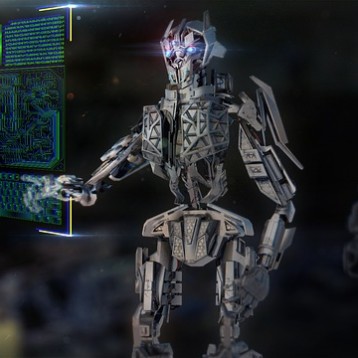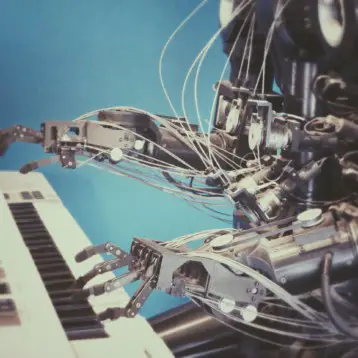The serpentine robots, each roughly three feet in length, use a movement unique even in nature. “Unlike inchworm type gaits often being developed for serpentine robot locomotion, this novel climbing gait requires the serpentine robot to wrap around the structure in a helical shape, and twist its whole body to climb or descend by rolling up or down the structure,” said Dr. Hong, director of Virginia Tech’s RoMeLa, and the faculty adviser on the project.
The HyDRAS robots operate using electric motors, while the CIRCA robot uses a compressed air muscle. “The use of compressed air makes this approach feasible by enabling it to be light weight, providing compliant actuation force for generating the gripping force for traction, and allowing it to use a simple discrete control scheme to activate the muscles in a predetermined sequence,” said Hong. For now, the robots operate using a tethered wire attached to a laptop, but Hong and his mechanical engineering students are reconfiguring the devices to function independently using an onboard microprocessor and power source.
The HyDRAS and CIRCA pole-climbing serpentine robots were designed to take the place of construction workers tasked with dangerous climbing or jobs performed on scaffolding. The robots will serve as a practical inspection tool for construction sites where use of autonomous tools can decrease the rising numbers of construction worksite injuries or death that are reported each year; during the past decade, falls have been second only to highway incidents in the number of reported work-related deaths.
Gabriel Goldman, one of the doctoral student developers of the robots, reports, “The pole doesn’t have to be circular. Imagine you have a rectangular or square support — as long as there is sufficient area to contact, it could be used on other workplace structures. The HyDRAS-Ascent and its more powerful successor, the HyDRAS-Ascent II, can wrap around a pole in either a helical or doughnut-like shape.”
“The climbing movement,” Goldman adds, “is akin to that of rotational joints in the human body. Your fingers, for example, have single rotational joints that allow each digit to bend forward. The snake robots have a universal joint structure, in which two rotational joints intersect like a plus sign. The result is a capacity for much broader movement, like the rotation of your wrists.”
Within each HyDRAS robot, small electric motors generate an oscillating motion at the universal joints between each module, leading to a sort of wobble along the entire length. With the CIRCA (short for Climbing Inspection Robot with Compressed Air), the difference lies in use of artificial muscles that could tap a construction site’s compressed air stores to contract and expand. “The contraction generates the wobbling motion that collectively creates the roll,” Goldman explained.
Dr. Hong reports that “The entire snake actually generates a rolling motion, twisting about its own axis, so that it actually rolls up the pole — but it’s not on wheels.” The unusual motion of the HyDRAS offers other distinct advantages. Hong gives examples, where in movements up a pole where an obstacle such as a T-junction or X-junction is encountered, the HyDRAS could unwrap its head and let the controller use a camera to direct where it needs to go next. Furthermore, changes in pole diameter or shape would not deter the serpentine robot’s movement and function.
HyDRAS-Ascent Arm, and CIRCA have already won several U.S. and international competition awards. The research team at Virginia Tech continues development of the HyDRAS technology, saying that serpentine robots could, for example, be used in the future to defuse roadside bombs or in other military applications, in addition to taking the place of workers for high-rise or underwater bridge inspections.
TFOT has previously covered an extensive number of stories on robotic development, including an advanced robotic arm – Kuka-HA 60-3, the iRobot Looj – a gutter cleaning robot, an Android-based robot, and BIGDOG – a quadruped robot.
You may visit the robotics research webpage of Virginia Tech for more information on the research.










